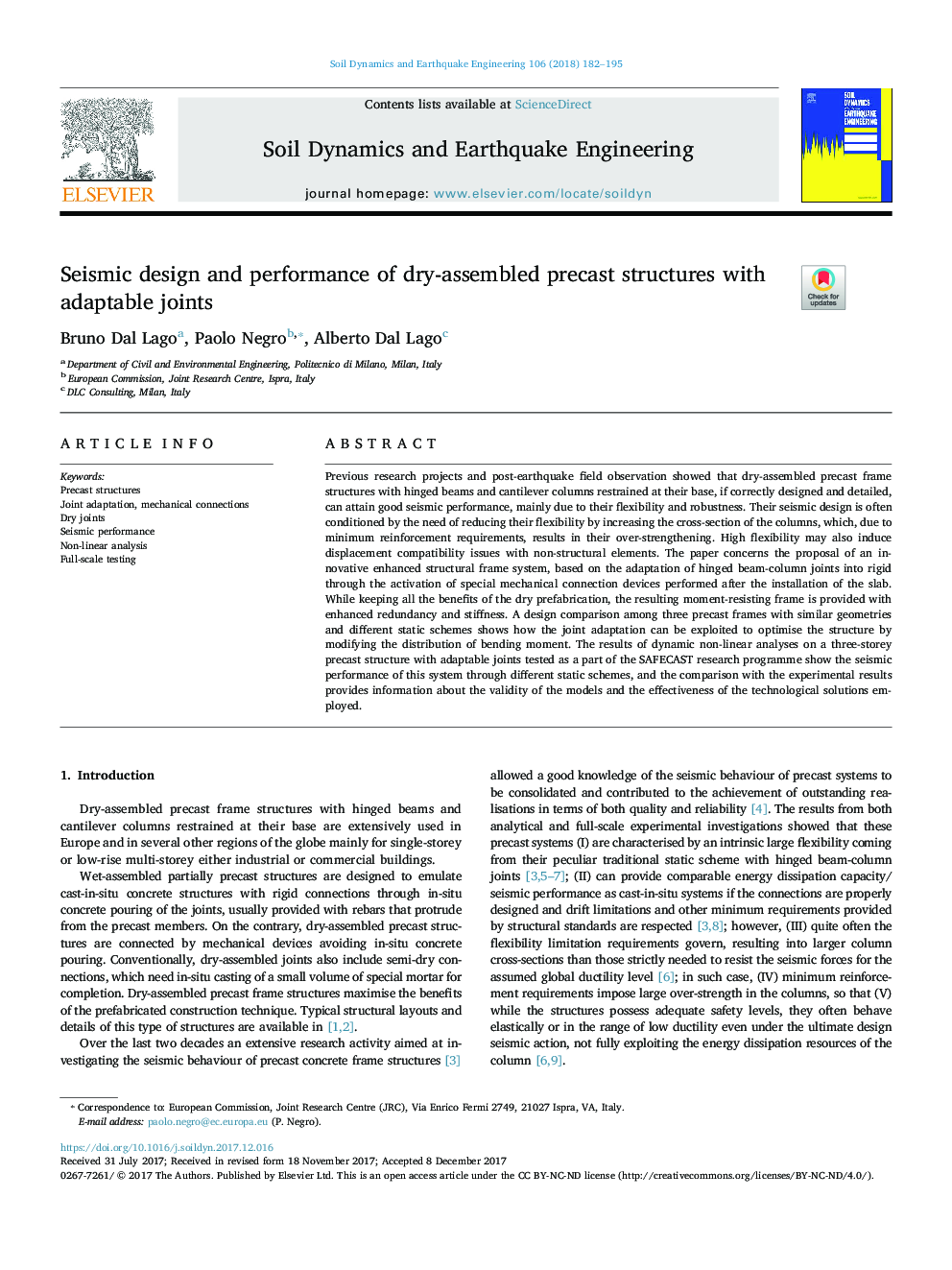| Article ID | Journal | Published Year | Pages | File Type |
|---|---|---|---|---|
| 6770902 | Soil Dynamics and Earthquake Engineering | 2018 | 14 Pages |
Abstract
Previous research projects and post-earthquake field observation showed that dry-assembled precast frame structures with hinged beams and cantilever columns restrained at their base, if correctly designed and detailed, can attain good seismic performance, mainly due to their flexibility and robustness. Their seismic design is often conditioned by the need of reducing their flexibility by increasing the cross-section of the columns, which, due to minimum reinforcement requirements, results in their over-strengthening. High flexibility may also induce displacement compatibility issues with non-structural elements. The paper concerns the proposal of an innovative enhanced structural frame system, based on the adaptation of hinged beam-column joints into rigid through the activation of special mechanical connection devices performed after the installation of the slab. While keeping all the benefits of the dry prefabrication, the resulting moment-resisting frame is provided with enhanced redundancy and stiffness. A design comparison among three precast frames with similar geometries and different static schemes shows how the joint adaptation can be exploited to optimise the structure by modifying the distribution of bending moment. The results of dynamic non-linear analyses on a three-storey precast structure with adaptable joints tested as a part of the SAFECAST research programme show the seismic performance of this system through different static schemes, and the comparison with the experimental results provides information about the validity of the models and the effectiveness of the technological solutions employed.
Related Topics
Physical Sciences and Engineering
Earth and Planetary Sciences
Geotechnical Engineering and Engineering Geology
Authors
Bruno Dal Lago, Paolo Negro, Alberto Dal Lago,
